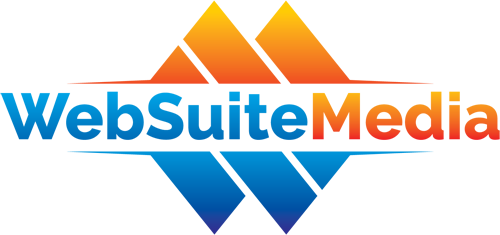7 considerations for QAPI (Quality Assurance and Performance Improvement) in nursing home healthcare and compliance for 2024:
Page Contents
- 7 considerations for QAPI (Quality Assurance and Performance Improvement) in nursing home healthcare and compliance for 2024:
- Designing Comprehensive Quality Assurance Programs for 2024
- Regularly Refreshing QAPI Plans and Policies
- Driving Improvements through Robust Quality Processes
- Staff Education Essential for QAPI Excellence
- Meeting Standards while Driving Broad Engagement
- Participate in Collaborative Quality Improvement Efforts
- Leveraging External Partnerships to Advance Quality
What Is QAPI?: QAPI is an ongoing, comprehensive system to proactively improve quality of care and services. An effective QAPI program requires involvement across the organization; from frontline staff to administration. It utilizes data, root cause analyses, goal-setting, and measurement to help recognize and optimize areas for improvement. Annual updates and staff education ensure the program stays current and engaged.
Schedule A Call To Learn More!
Designing Comprehensive Quality Assurance Programs for 2024
Quality Assurance and Performance Improvement (QAPI) programs will be a major focus area for nursing homes in 2024. With updated QAPI guidelines and regulations from the Centers for Medicare and Medicaid Services (CMS), facilities must enhance their programs to drive better quality of care and outcomes.
guidelines and regulations from the Centers for Medicare and Medicaid Services (CMS), facilities must enhance their programs to drive better quality of care and outcomes.
An effective, comprehensive QAPI program requires:
- Involvement across the organization – From C-suite executives to frontline caregivers, engagement at all levels is crucial for success. QAPI should become ingrained in the facility’s culture.
- Measurable goals and robust data – Programs need clear objectives, metrics, and methods to collect and analyze performance data. This enables homes to identify issues and track improvement.
- Prioritizing high-impact initiatives – Conduct root cause analyses to pinpoint systemic problems. Develop corrective actions, apply quality tools, and measure effectiveness. Stay focused on key priorities.
- Education and training – Provide regular QAPI and quality improvement training to inform and engage staff. Review case studies, share results, celebrate wins, and discuss opportunities.
Homes must meet CMS’ minimum compliance requirements for QAPI committee composition and assessments. However, truly embedding QAPI across all operations and services is the strategy for 2024. This creates an environment of continuous learning and improvement. It also demonstrates to surveyors that quality and safety are top priorities.
While regulations shape the foundation, the most successful nursing homes will go beyond minimum mandates. They will leverage QAPI to transform their cultures, improve resident outcomes, and prepare for the increasing demands of value-based care. The focus for 2024 is applying robust quality management to drive systemic improvements that benefit residents.
Regularly Refreshing QAPI Plans and Policies
To keep Quality Assurance and Performance Improvement (QAPI) programs effective, nursing homes must review and renew their plans annually. This ensures alignment with evolving regulations, best practices, and the facility’s current challenges and opportunities.
Key aspects of the annual plan review process include:
- Analyze performance data – Review metrics from the prior year tied to the QAPI plan goals. Look for trends, issues that need addressing, and areas working well.
- Identify improvement priorities – Based on the data, leadership input, and compliance factors, determine 3-5 key priority areas to target for next year’s QAPI plan.
- Revise policies – Update any policies tied to the QAPI program to support the focus areas. For example, modify admission policies to drive down rehospitalizations.
- Establish objectives – Define measurable goals and target outcomes for the priority areas to track progress.
- Review committee structure – Confirm the makeup and cadence of committees will facilitate focus on the quality priorities for the coming year.
Updating the QAPI plan annually enables homes to adapt as regulations, resident needs, and business objectives evolve. It should serve as the roadmap to coordinate facility-wide quality improvement efforts.
The updated plan then sets the direction for the year ahead. It guides training, data collection, performance dashboards, corrective actions, and compliance. Staff at all levels need education on the current initiatives so everyone understands the quality focus and their role.
By dedicating time to refresh QAPI plans and policies, homes can pivot initiatives as required. This positions them to address emerging challenges proactively. It also demonstrates to surveyors that continuous improvement is a priority across the organization.
Driving Improvements through Robust Quality Processes
A core component of Quality Assurance and Performance Improvement (QAPI) is using quality tools and methodologies to enhance resident outcomes. Nursing homes should prioritize 3-5 key issues annually and apply robust processes to address them.
Prioritizing High-Impact Areas
Review performance data, compliance factors, and staff input to identify high-risk, high-volume, or problem-prone areas. These may involve infection control, falls, pressure ulcers, or medication safety. Prioritizing enables homes to make meaningful improvements versus trying to tackle too many issues superficially.
Conducting Root Cause Analyses
Drill into prioritized issues to pinpoint underlying systemic causes versus just the obvious symptoms. This requires gathering data, mapping out processes, and brainstorming with staff. Root cause analyses get to the source of problems so corrective actions can have lasting impact.
| Contributing Factor | Root Cause |
| High fall rates | Inconsistent resident assessments |
| Staff unaware of fall risks | |
Developing Corrective Actions
Use a structured approach to define targeted solutions once root causes are clear. Corrective actions should be:
- Specific – Who? What? When?
- Measurable – Metrics to gauge impact
- Achievable – Within the team’s control
- Relevant – Addresses the root cause
- Time-bound – Deadline for implementation
Measuring Effectiveness
Track metrics tied to the goals for corrective actions over time. Monitor both process measures and outcomes measures to confirm solutions are working and improvements are sustainable. Continue refining until the desired impact is achieved.
By applying robust quality improvement practices, homes can make significant strides in enhancing resident care and safety. This level of process discipline demonstrates to surveyors that sound QAPI practices are in place.
Staff Education Essential for QAPI Excellence
 A consistent finding from nursing home surveys is lack of staff education and engagement with Quality Assurance and Performance Improvement (QAPI) efforts. With updated QAPI regulations for 2024 emphasizing robust programs, providing regular training to all staff is crucial.
A consistent finding from nursing home surveys is lack of staff education and engagement with Quality Assurance and Performance Improvement (QAPI) efforts. With updated QAPI regulations for 2024 emphasizing robust programs, providing regular training to all staff is crucial.
Comprehensive education enables employees to fully participate in and contribute to quality initiatives. Key aspects include:
QAPI Program Training
- Explain what QAPI is, why it matters, and how it benefits residents and staff
- Review the facility’s QAPI plan – priorities, metrics, goals
- Discuss policies and procedures tied to QAPI focus areas
- Share examples of improvements driven by QAPI efforts
This foundational training ensures everyone understands the program and their role.
Ongoing Quality Improvement Education
Provide training when new initiatives launch, such as:
- Fall prevention protocols
- Infection control enhancements
- Medication management upgrades
Review related data, risks, processes, responsibilities, and compliance issues.
Celebrating Successes
Communicate QAPI and quality improvement wins on a regular basis. Highlight examples such as:
- Reduced pressure ulcers
- Fewer UTIs
- Increased flu vaccinations
Sharing success stories and data reinforces sustainability.
Case Studies
Discuss real examples and case studies highlighting how systemic issues were uncovered and addressed. Make improvement practices tangible.
Investing in continual education and updates empowers staff to drive better resident outcomes. It enhances engagement, accountability, and compliance results. Most importantly, it improves quality of life – the core focus of QAPI efforts.
Meeting Standards while Driving Broad Engagement
Nursing homes must comply with Quality Assurance and Performance Improvement (QAPI) regulations around committee structure and assessments. This includes:
- Minimum Participants
- Administrator
- Medical Director
- Nurse Manager
- Frequency
- Meet at least quarterly
- Standard Assessments
- Quality of care
- Quality of life
- Resident satisfaction
While homes must fulfill these rules, truly effective QAPI programs incorporate broader engagement across the organization.
Expanding Involvement
Successful nursing homes have quality committees that extend beyond the minimum:
- Unit managers from all departments
- Infection control and preventionists
- Frontline staff across roles
- Resident and family council members
This brings diverse perspectives to identify issues and improvement opportunities. It also aids adoption of solutions.
Increasing Cadence
Quarterly meetings provide formal oversight. However, homes can establish more frequent touchpoints:
- Monthly or biweekly small workgroups to execute initiatives
- Daily or weekly department huddles to share updates
This continual emphasis outside formal gatherings drives an ongoing focus on quality.
Embedding in Operations
Make QAPI part of daily work beyond just committees, such as:
- Unit managers reviewing quality metrics in regular reports
- Department heads discussing progress during stand-ups
- Staff making suggestions via improvement boards
This integration into operations, staffing models, and culture is what transforms programs. While adhering to compliance rules, homes must also push for maximum engagement across the facility. This breadth and depth of focus is what enables excellence in quality and safety.
Participate in Collaborative Quality Improvement Efforts
While nursing homes must manage their own robust Quality Assurance and Performance Improvement (QAPI) programs internally, they can also benefit from external partnerships. Collaborating with industry groups, government agencies, and Quality Improvement Organizations (QIOs) brings additional resources and best practices.
Industry Group Partnerships
Non-profit industry associations like AHCA offer training, tools, and peer networking opportunities to advance QAPI efforts. Homes can leverage these to:
- Access case studies and proven methodologies
- Compare progress on quality metrics
- Get guidance resolving specific challenges
Learning from peers accelerates improvement cycles.
Government Agencies
State and federal agencies like CMS fund quality improvement initiatives in nursing homes. Participating provides:
- Data management and analysis support
- Evidence-based protocols and interventions
- Progress tracking frameworks
These structured programs complement internal QAPI plans.
Quality Improvement Organizations
QIOs have experts and programs to enhance safety, outcomes, and systems in post-acute care settings. Engaging with regional QIOs enables access to:
- Technical assistance for quality projects
- Targeted staff education
- Community collaboration opportunities
These resources help scale QAPI efforts.
While nursing homes must drive internal quality management, external partnerships provide valuable synergies. The expertise, frameworks, and networking strengthen QAPI programs beyond what facilities can accomplish independently. Homes should actively coordinate with government, industry, and non-profit collaborators as part of 2024 planning.
Leveraging External Partnerships to Advance Quality
A key consideration for nursing homes’ Quality Assurance and Performance Improvement (QAPI) programs is participating in external collaborations that complement internal efforts. Partnerships with industry groups, government agencies, and Quality Improvement Organizations (QIOs) provide valuable expertise and resources to drive better outcomes.
Industry Groups
Non-profit industry associations like the American Health Care Association (AHCA) offer training, evidence-based protocols, benchmarking data, and peer networking opportunities to advance quality. Homes can leverage these to:
- Access case studies and proven methodologies
- Compare progress on quality metrics
- Get guidance resolving specific challenges
Learning from peers accelerates improvement cycles.
Government Initiatives
Federal and state agencies like the Centers for Medicare and Medicaid Services (CMS) provide frameworks, data tools, and funding to facilitate coordinated quality improvement across sectors. Engaging with these structured programs enables access to:
- Technical assistance for developing initiatives
- Progress tracking mechanisms
- Community collaboration opportunities
Quality Improvement Organizations
QIOs have experts and initiatives specifically aimed at helping post-acute providers enhance safety, outcomes, and systems. Partnering with regional QIOs offers:
- Education and training for staff
- Assistance with data analysis
- Support executing quality projects
While nursing homes must drive internal quality management, leveraging external collaborations provides valuable synergies. The expertise and structure complement QAPI efforts and help scale impact. Homes should actively coordinate with partners across sectors as part of their 2024 planning.
Citations: [1] https://www.cms.gov/medicare/provider-enrollment-and-certification/qapi/qapidefinition [2] https://experience.care/blog/the-5-core-elements-of-qapi/ [3] https://www.cms.gov/newsroom/fact-sheets/updated-guidance-nursing-home-resident-health-and-safety [4] https://www.aapacn.org/resources/qapi-and-quality-initiatives/ [5] https://www.ahcancal.org/Survey-Regulatory-Legal/Pages/QAPI.aspx [6] https://www.cms.gov/medicare/health-safety-standards/quality-safety-oversight-general-information/policy-memos-states-and-cms-locations [7] https://www.wolterskluwer.com/en/expert-insights/what-are-qapi-programs-in-longterm-care [8] https://www.cms.gov/Medicare/Provider-Enrollment-and-Certification/QAPI/Downloads/QAPI-Plan-How-to-Guide.pdf [9] https://cmscompliancegroup.com/2023/09/22/cms-announces-updates-to-nhc-staffing-amp-quality-measures-qso/ [10] https://www.ihi.org/insights/how-support-effective-quality-improvement-nursing-homes [11] https://www.hsag.com/QAPI [12] https://www.ahcancal.org/Education-Events/Quality-Summit/Pages/default.aspx [13] https://www.weltman.com/publication-should-your-nursing-home-qapi-program-be-updated-annually [14] https://ltcombudsman.org/issues/quality-assurance-performance-improvement-qapi [15] https://www.ahcancal.org/News-and-Communications/Blog/Pages/CMS-Updates-Nursing-Home-Care-Compare-Staffing-and-Quality-Measures.aspx [16] https://www.cms.gov/newsroom/press-releases/cms-issues-final-quality-assessment-and-performance-improvement-conditions-participation-hospitals [17] https://www.hhs.texas.gov/providers/long-term-care-providers/nursing-facilities-nf/quality-assurance-performance-improvement-resident-safety [18] https://compliancecosmos.org/healthcare-compliance-post-pandemic-world [19] https://www.ahcancal.org/News-and-Communications/Blog/Pages/Submit-Your-2024-National-Quality-Award-Intent-to-Apply.aspx [20] https://homehealthcarenews.com/2023/10/hhcn-future-addressing-home-health-agency-readiness-for-potential-payment-cuts-in-2024/


